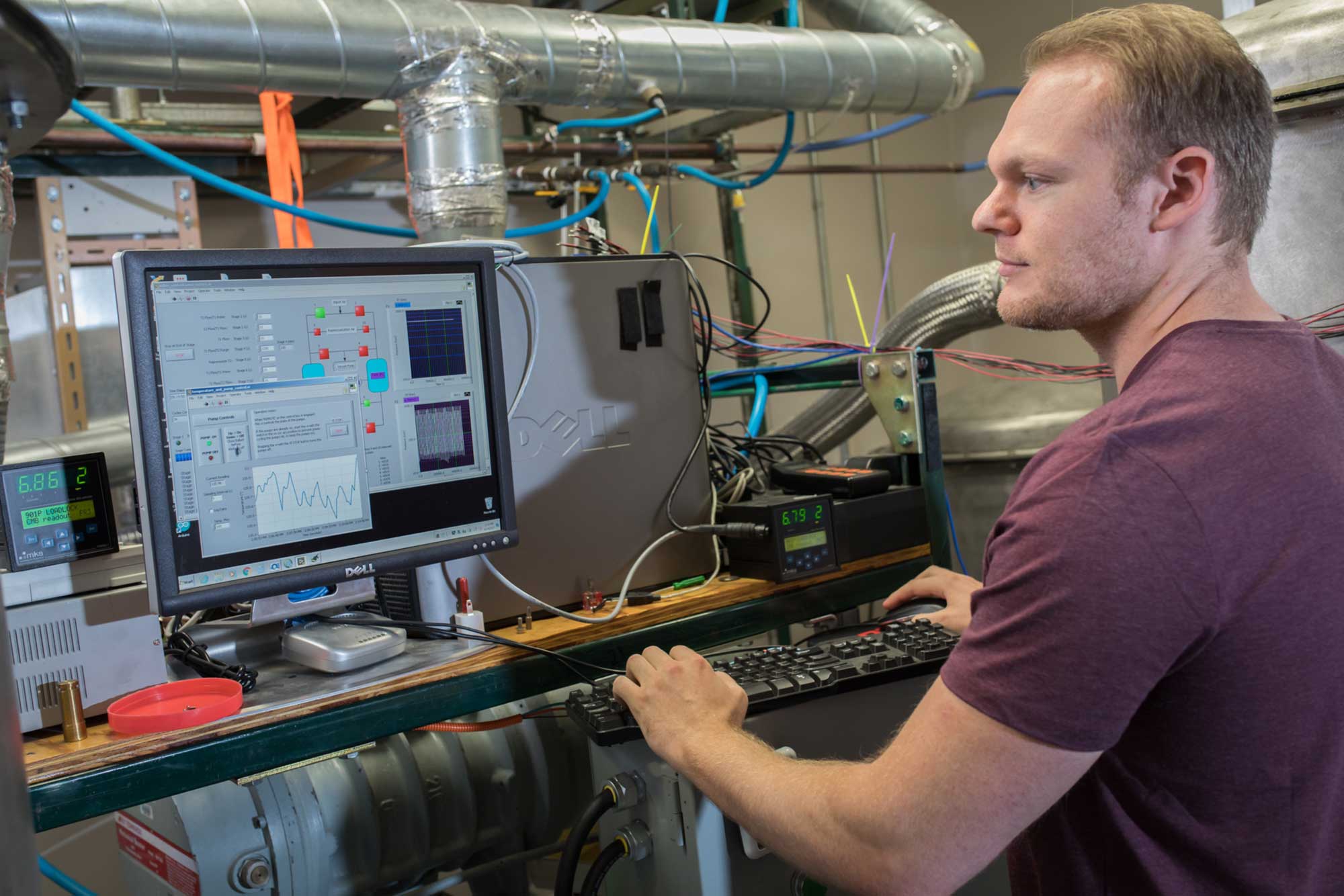Research: Data Science and Numerical Modeling

Using data for creative problem-solving solutions.
- Microwave sensing and direction-finding systems for civil and military applications
- Molecular modeling and simulation to address problems relevant to energy and the environment
- Physical processes responsible for how convective storms (thunderstorms) organize,
evolve, and produce severe weather hazards (large hail, damaging winds and tornadoes)
- Developing methods for understanding the structure of data in high dimensions, dimensionality reduction, and model development for accurate prediction
- Advanced operations research techniques to optimize underground mine scheduling and planning
- Multi-physics modeling and simulation of multiphase flows, compressible flows, and shock-fronts, with relevance to medical, biomedical, aerospace, and energy fields.
Research Projects:
A scalable decision support tool (s-DST) for equitable water resources allocation
and management under projected climate
Civil and Environmental Engineering / Mengistu Geza Nisrani, William Capehart, Ramana Gadhamshetty
Applying Molecular Modeling utilizing Computational Quantum Chemistry, Molecular Dynamics,
and Monte Carlo methods to model and simulate solvent-based reactions and separation
systems
Application of LIBS technology to characterize rocks
Carbon Monitoring and Disturbances on National Forest Service Lands - apply statistical
models to estimate carbon fluctuations on NFS and attribute to different disturbances
(fire, logging, bugs, etc.)
Climate Resiliency Center for building adaptive capacity in tribal communities along
the Missouri River Basin
Classifying the root causes contributing to overbreak and underbreak during stope
development using machine learning techniques
Data analysis of substance use disorder disparities
Data completion and model development for soil moisture monitoring from geospatial
sensing
Developing and testing radiological background simulations for big data production
on the Fermilab grid computing cluster for the DUNE experiment
Developing the Game Theory-Informed Blockchain Framework for Life Cycle Sustainability
Assessment
Development of Cyber-Infrastructure for Phase Equilibria Experiments and Trace Element
Partitioning Data
Detection of slope movement using photogrammetry data from unmanned aerial vehicles
Diabetic retinopathy prediction
Digitalization applications in rock engineering
Discovery and measurement of PeV gamma rays with the underground IceCube detector
and atmospheric IceAct-IACT using Graph-Neural-Networks
Engaging in Systems Biology by utilizing Bioinformatics, Computational Tools and Statistical
methods to analyze omics data and model biological systems
Exploring Rheology and Transport Phenomena to investigate behavior of Complex Fluids,
Weakly Viscoelastic Polymer Solutions, and Soft Solids, in Biomedical contexts to
enhance the design and functionality of medical devices and drug delivery systems
Graph representation learning for covert networks: anomaly detection, clustering,
and forecasting methods
Intelligent Automation via Multilinear Systems Theory
Investigating public discourse on social media during virus outbreaks to detect sentiment,
hate, anxiety, toxicity, and fear
Machine learning assisted target classification in microwave images
Machine learning based ECG signal classification
Mapping forest carbon fluxes with attribution to disturbance type
Minimizing Induced Seismicity from Fluid Injection and Extraction
Multilinear Subspace Learning: Extending Machine Learning Approaches to Multilinear
Data
Open-Source, Cloud-Enabled, Data-Driven Modeling Platform to Support Research for
the Volcanology, Geochemistry, and Petrology Community
Optimization of Borehole Thermal Energy Storage
Optimal Transport Methods for Multilinear Forecasting - develop OT methods to determine
minimum distance between multivariate distributions, with applications in graph reduction
and population masking
Overcoming cover crop adoption barriers in dryland production systems
Population obfuscation for privacy preserving data augmentation and data sharing
Probabilistic forecasting methods: from forecasting data to forecasting data-distributions
Quantitative Analysis of Trace Element Partitioning Data for Mantle Minerals using
Statistical Methods and Causal Predictive Models
Reconstruction of primary energy and mass composition of high-energy cosmic rays with
the IceCube Neutrino Observatory using machine learning
Spatio-temporal models for forest inventory data
Spatial-temporal Models for National Forest Inventory Data - develop and study statistical
models and stochastic differential equations for inference on spatial-temporal fluxes
of forest attributes across the contiguous United States
The Impact of Experimental Design on the Configuration of Calibration Datasets and
Implications on Predictive Models of Trace Element Partitioning
Using machine learning to improve quality control in 3D printing
Using Space-Based Remote Sensing Systems to Track West Nile Virus in the Black Hills
Virtual reality cybersickness modeling
Virtual Reality simulations and training
Water availability, quality of groundwater and surface water, climate and land-use
trends, and streamflow dynamics within the Missouri River and upper basin tributaries